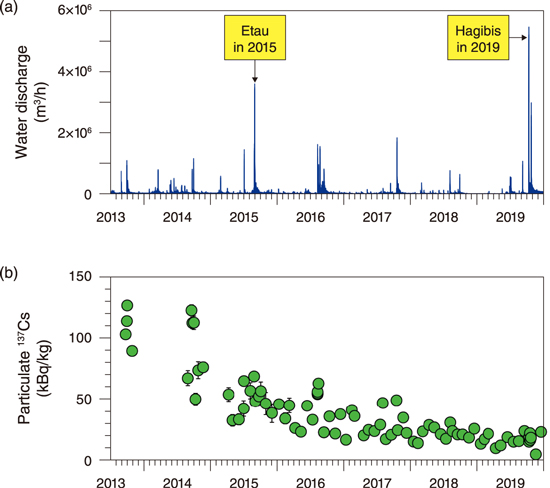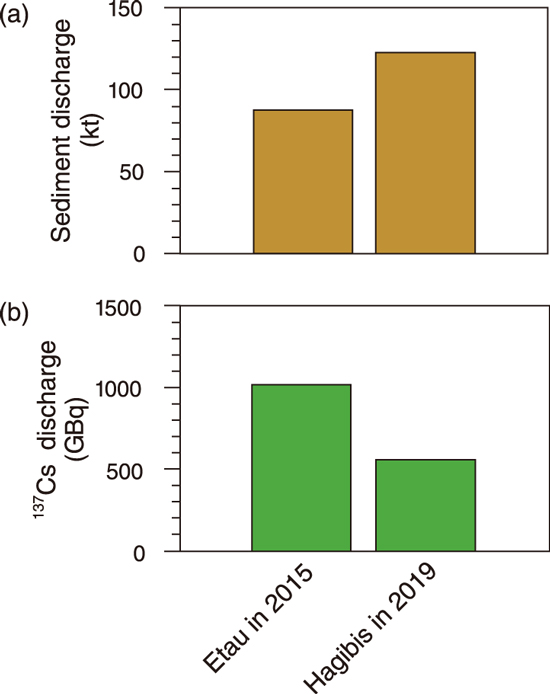
Fig.1-22 Water discharge and particulate 137Cs concentration

Fig.1-23 Comparison of sediment and radiocesium (RCs) discharges of typhoons Etau and Hagibis
Radiocesium (RCs) released by the accident at the TEPCO’s Fukushima Daiichi NPS (1F) is transported by the river system. In the past, JAEA developed a simulation model named MERCURY, which was designed based on the observation results until the end of 2017, and used this model to calculate the RCs discharge through rivers into the ocean after the accident at 1F. However, continuous RCs observation in representative rivers is indispensable to obtain the empirical data to verify whether unexpected Cs discharge caused by the intensified and frequent heavy rain disasters in recent years can be predicted by a simulation model. In this study, we observed the amount of RCs discharge caused by the extreme typhoon Hagibis that struck Japan in October 2019 and compared this event with typhoon Etau that struck in September 2015 and was the largest flood event since the accident at 1F.
Since autumn 2013, JAEA has continuously observed the water and sediment discharges from the Ukedo River near 1F and periodically measured the RCs concentration in sediments (particulate RCs). The flood caused by the typhoon Hagibis recorded the largest water discharge during the observation period (September 2013–December 2019) (Fig.1-22(a)), and 73% of the annual sediment discharge in 2019 occurred during this typhoon. That is, the sediment discharge during floods dominates the annual RCs discharge. In addition, it was also clarified that particulate RCs concentrations decreased with time regardless of the amount of sediment discharge (Fig.1-22(b)). Therefore, the amount of RCs discharged during typhoon Hagibis was half that of typhoon Etau, though the amount of sediments discharged during Hagibis was about 1.4 times that discharged by Etau (Fig.1-23). Considering the decreasing trend of the particulate RCs concentration, the RCs discharge caused by unexpected flood events in the future will be less than the RCs discharges of typhoons Etau and Hagibis.
The RCs discharge during typhoon Hagibis as calculated by MERCURY (353 GBq) was consistent with the observation results. Therefore, the usefulness of MERCURY was reconfirmed. We will continue to observe rivers and further advance MERCURY.
(Takahiro Nakanishi)